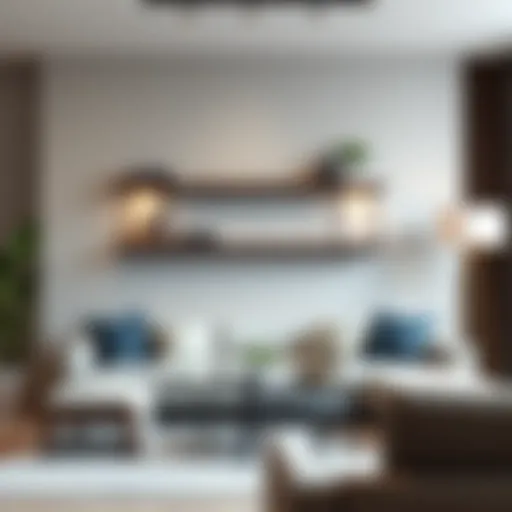Seagrass Pendant Shades: A Blend of Style and Function
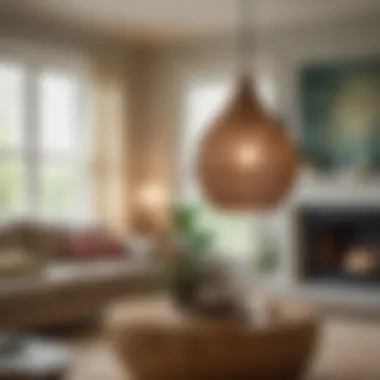

Intro
Seagrass pendant shades are not just a fleeting trend; they embody a thoughtful marriage of practicality and chic design. These fixtures tap into a growing desire for eco-friendly materials in home decor, providing a distinctive aesthetic that resonates with nature lovers and style seekers alike. Whether you're a seasoned designer or a homeowner looking to refresh your space, the allure of seagrass lies in its flexible integration into diverse environments.
More than mere accessories, these shades prove to be transformative elements in interior spaces. From coastal homes to urban lofts, they imbue warmth and texture, enhancing visual appeal while promoting sustainability. This article will unfold the layers of why seagrass pendant shades deserve a rightful place in modern decor, exploring their environmental impact, design versatility, and practical applications.
Furniture Trends
Current Market Trends
Seizing the spotlight in the current market, seagrass pendant shades are a hit with those who crave an organic element in their interiors. The recent surge in sustainable decor reflects a collective shift towards environmentally conscious choices. As a result, designers and consumers alike are leaning into materials that provide both beauty and function.
Seagrass, harvested from coastal environments, provides an aesthetic that echoes the tranquility of the sea. The texture and color palette of these shades can vary—ranging from warm, earthy tones to more muted, natural hues. This variety allows for seamless blending with numerous styles, including bohemian, rustic, modern, and coastal.
Popular Styles and Designs
When it comes to styles, several designs have emerged as favored choices:
- Woven Textures: Shades with intricate weaving patterns create a stunning play of light and shadow.
- Minimalist Shapes: Simple forms cater to contemporary tastes, showcasing the beauty of the material itself without unnecessary embellishments.
- Layered Looks: Combining seagrass shades with metal or glass elements offers a striking contrast that appeals to modern sensibilities.
The flexibility in design means you can find a shade that aligns with your vision—whatever it may be.
DIY Projects
Step-by-Step Guides
For the creatively inclined, crafting your own seagrass pendant shades can be rewarding. Here’s a simple guide:
- Gather Materials: You will need seagrass, a wire frame for the shade, and a sturdy adhesive.
- Create the Base: Form the wire into a desired shape; this could be round or even asymmetrical.
- Attach Seagrass: Cut seagrass strands to your preferred lengths and start gluing them onto the wire frame, layering for texture.
- Finish Up: Once fully covered, ensure your design is secure and let it dry completely.
Budget-Friendly Ideas
If crafting isn't your strong suit, consider these wallet-friendly alternatives to incorporate seagrass:
- Upcycle Existing Fixtures: Add a seagrass cover to existing light fixtures to bring new life without spending a fortune.
- Shop Local Flea Markets: You can often find unique seagrass shades at local markets that won't break the bank.
- Mix and Match: Combine seagrass shades with thrifted decor pieces; the combination often results in striking arrangements that stand out.
The beauty of seagrass pendant shades lies in their capacity to enhance a space, merging beauty with sustainability. By embracing these elements, you're not just decorating; you're making a statement that aligns with a conscientious lifestyle.
Intro to Seagrass Pendant Shades
The allure of seagrass pendant shades has been gently weaving its way into contemporary home design, creating a fusion of aesthetic beauty and practical functionality. Their rise has come at a time when homeowners and designers alike are increasingly conscious of the materials they incorporate into their spaces. The varying textures of seagrass not only elevate a room's visual appeal but also spark a conversation about sustainability and environmental impact. With the ongoing quest for unique and versatile decor options, these shades shine brightly as a solution that bridges the gap between style and eco-friendliness.
Defining Seagrass as Material
Seagrass, often mistaken for traditional grasses, is aquatic plant life that thrives in coastal areas. Unlike synthetic alternatives, its natural fibers bring warmth and distinctiveness to any interior space. When crafted into pendant shades, seagrass embodies a refreshing and organic quality that resonates with both coastal and rustic design aesthetics.
The weaving technique used to create these shades allows for light to filter through in artistic ways, generating patterns of shade and shadow that can transform the mood of a room. Seagrass is inherently durable, making it an ideal choice for high-traffic areas where other materials might falter under pressure. This adaptive quality not only gains the favor of busy households but also emphasizes an underlying resilience.
Notably, seagrass is biodegradable, aligning seamlessly with modern sensibilities towards sustainable living. Its natural origins grant it a unique charm, with each piece telling a story of its own as textures and colors vary subtly across shades. When one brings a seagrass pendant shade into their home, they invite a slice of the ocean and its tranquility into their lives, making it more than just a decorative object, but a testament to nature's craftsmanship.
The Rise in Popularity of Pendant Lighting
In the ever-evolving world of interior design, the resurgence of pendant lighting marks a significant trend. Unlike traditional overhead lights, pendants provide a focused illumination, drawing attention to specific areas while creating a cozy atmosphere. The flexibility in size, shape, and height allows homeowners to tailor their choice to suit various spaces — be it hanging over a dining table or illuminating a reading nook.
The appeal of pendant lighting extends beyond mere functionality; it's also about the statement they make. Seagrass pendant shades, in particular, have gained traction as they marry utility with art, allowing for creative expression while keeping spaces airy and light.
"A well-placed pendant light acts as a beacon, guiding the eye and shaping the ambiance of a room."
Moreover, the versatility that pendant lighting offers has resonated well with homeowners addicted to reimagining their spaces. As rooms evolve with seasons and styles, seagrass shades pivot effortlessly, adapting to both minimalist and bohemian approaches. This adaptability is crucial in a landscape where personal taste varies widely.
As this trend continues to wear its relevance with pride, seagrass pendant shades not only thrive in popularity but also symbolize a deeper connection to nature. They remind us that in a fast-paced world, simplicity and authenticity can have a striking impact on our surroundings.
Ecological Considerations
The relevance of ecological considerations in the context of seagrass pendant shades cannot be overstated. As more individuals lean towards sustainable living, the environmental footprint of our decor choices becomes paramount. Seagrass, as a material for pendant shades, brings significant benefits, particularly in areas of sustainability and the health of marine ecosystems. Understanding these aspects can shape our approach to interior design, and guide us in making eco-conscious decisions that resonate with our values and lifestyle.
Sustainability of Seagrass
Seagrass, an underwater flowering plant, is often overlooked in discussions around sustainable materials. However, its role in promoting environmental health is noteworthy. Harvesting seagrass for decorative items like pendant shades does not typically harm the marine environment, especially when it’s sourced responsibly. Here are key points about its sustainability:
- Renewable Resource: Seagrass grows rapidly and is easily replenished, making it a more sustainable choice than many other natural fibers.
- Biodegradable: Unlike synthetic materials, seagrass naturally decomposes, reducing waste in landfills and minimizing pollution.
- Low Footprint: Production processes for seagrass shades often involve fewer resources compared to conventional lighting materials. This results in lower carbon emissions associated with manufacturing.
By incorporating seagrass into our homes, we are not just beautifying our spaces; we are also making a commitment to preserving the environment. This choice supports a circular economy, where materials are reused, repurposed, and kept in use for as long as possible.
"Choosing seagrass pendant shades can significantly lessen the load on our planet while enhancing aesthetic appeal."
Impact on Marine Ecosystems
The health of marine ecosystems is critical, not just for those creatures that dwell within them, but for the overall health of our planet. Seagrass beds play a vital role in the livelihoods of numerous marine species. When discussing the impact of seagrass on ecosystems, we can highlight several points:
- Habitat Creation: Seagrass provides habitat and nursery grounds for fish, shrimp, and various marine organisms, ensuring biodiversity in coastal areas.
- Water Quality Improvement: As a natural filter, seagrass helps improve water quality by trapping sediments and absorbing excess nutrients. This filtration is essential for maintaining the ecological balance.
- Carbon Sink: Seagrass meadows are effective carbon sinks. They capture carbon dioxide from the atmosphere and store it in the seabed, thereby mitigating climate change effects.
In sum, seagrass has far-reaching implications not only as a material choice for pendant shades but also as a crucial player in sustaining marine life. Fostering a deeper understanding of these ecological considerations assists homeowners and designers alike in aligning design choices with environmental stewardship, ultimately transforming our spaces into havens of sustainability.
Design Versatility
Design versatility is integral to the charm and functionality of seagrass pendant shades. This quality allows these shades to fit seamlessly into a variety of interior aesthetics, making them a preferred choice for many homeowners and designers alike. The adaptability of seagrass pendant shades means they can enhance the visual appeal of diverse spaces, whether one seeks a laid-back coastal vibe or a more contemporary minimalistic ambiance. The richness in texture and organic shapes attributed to seagrass offers options that can either stand out as statement pieces or blend harmoniously into existing decor.
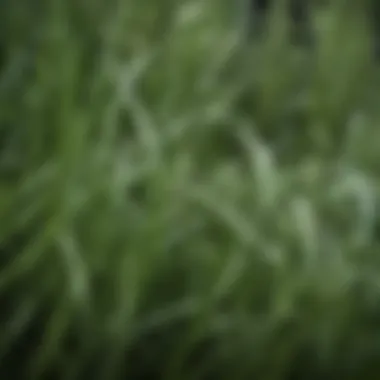

Seagrass Shades in Different Interior Styles
Coastal Aesthetics
Coastal aesthetics are characterized by a light, breezy ambiance that evokes the tranquility of the ocean. Seagrass shades are perfect for achieving this environment, as they bring a touch of the seaside into the home. The main characteristic of coastal design is using natural materials that resemble the sand and sea, and seagrass fits this bill perfectly. Its earthy tones not only enhance the seaside theme but also add an organic texture that can be calming.
One unique feature of coastal aesthetics is the use of light colors and airy environments, which seagrass shades complement effectively. They filter light beautifully, allowing a soft glow that creates a serene atmosphere. However, one disadvantage is that these shades can be susceptible to humidity damage if not maintained properly, making it essential to ensure that they are placed in suitable areas.
Bohemian Influence
A fundamental aspect of Bohemian influence lies in the celebration of eclectic, artistic expressions. Seagrass shades align perfectly with this style, thanks to their diverse textures and shapes. The key characteristic here is the layered approach to design—combining various textiles and decorations without adhering to strict color schemes or patterns. Seagrass shades become a focal point that brings together a myriad of other design elements.
These shades are versatile in their unique feature; they can be styled with vibrant colors and rich fabrics, allowing for a playful yet harmonious design. While this might seem like a match made in design heaven, the potential downside is that a poorly executed Bohemian space can feel chaotic if not curated thoughtfully.
Modern Minimalism
Modern minimalism emphasizes simplicity and functionality, focusing on clean lines and a neutral palette. Seagrass pendant shades can fit into this theme by providing a natural texture that contrasts beautifully against slick surfaces. Their key characteristic is the organic form that can break the monotony of minimalist spaces without overwhelming them.
In terms of unique features, these shades bring a subtle warmth that ensures a modern space doesn’t feel too sterile or cold. Despite their aesthetic contributions, a potential disadvantage is that they might require careful selection; choosing the wrong shade could disrupt the minimalist vision, leading to too much distraction from the overall simplicity.
Color and Texture: Enhancing Ambiance
Color and texture are vital for establishing atmosphere in any space. Seagrass shades elevate this ambiance by introducing a tactile element that is both inviting and visually engaging. The earthy hues of seagrass, from sandy beiges to soft browns, radiate warmth, which can make spaces feel cozier. Additionally, the texture adds depth, encouraging light to interact in dynamic ways as it filters through the woven fibers.
Utilizing color and texture thoughtfully can magnify the impact of seagrass on a room's overall feel. Incorporating other elements that resonate with the shades’ organic essence—such as wooden furniture or botanical art—can enhance cohesion in design. Ultimately, the right seagrass pendant shades can transform a mundane area into an inviting oasis, balancing elegance and homeliness in one package.
Practical Applications
When considering the integration of seagrass pendant shades into interior spaces, understanding the practical applications is crucial. These lighting fixtures not only enhance the aesthetics of a room but also serve functional purposes that align with contemporary design trends. From their suitability in specific environments to their compatibility with various textiles, seagrass pendant shades offer a unique blend of style and utility that can transform any setting.
Suitable Spaces for Seagrass Pendant Shades
Living Rooms
Living rooms are typically the heart of a home, often serving as the gathering place for family and friends. Installing seagrass pendant shades in this setting adds a distinct warmth and texture that can truly elevate the ambiance. The natural tones and organic shape of these shades complement various decor styles, making them a beneficial choice for creating an inviting atmosphere. Their unique feature lies in the way they diffuse light beautifully, casting a soft glow that encourages relaxation and conversation. However, one must consider the size of the shade in relation to the overall room; a too-small pendant might get lost in the space.
Dining Areas
In dining areas, lighting plays a pivotal role in setting the mood during meals. Seagrass pendant shades enhance the dining experience by introducing natural elements that align with a comfortable yet stylish environment. The key characteristic of these shades is their ability to provide focused illumination over the table while still contributing to the overall decor. They often become focal points themselves, drawing attention and creating a sense of intimacy at meal gatherings. It's important to check the height at which the shades hang—too low and they could obstruct views, too high and the light may not distribute well.
Bedrooms
When it comes to bedrooms, tranquility and style are paramount. Seagrass pendant shades work particularly well in this intimate space, offering a soft, ambient light perfect for winding down in the evenings. The natural texture of seagrass can resonate with a calming color palette, promoting relaxation. A noteworthy feature of these shades is their ability to seamlessly blend with both modern and traditional bedroom designs. The challenge lies in choosing the right size and placement to ensure they enhance rather than dominate the space, maintaining that serene feel essential for restful sleep.
Incorporating Seagrass with Other Textiles
Pairing with Natural Fabrics
Pairing seagrass pendant shades with natural fabrics, such as cotton, linen, or even jute, can create a unified and harmonious look in any room. This specific aspect brings out the organic quality of the seagrass, making the decor more inviting. Natural fabrics complement the earthy tones of seagrass, helping to foster a tranquil environment. The main advantage here is the emphasis on eco-friendliness, as both materials are sustainable choices—this could appeal particularly to environmentally-conscious homeowners or designers.
Layering Textures
Layering textures through various materials is essential in interior design, and it’s no different with seagrass pendant shades. Incorporating elements like wood, metal, or woven textiles can create visual interest and depth. The unique feature of texture layering lies in its ability to bring personality to a room and make it feel more dynamic. Experimenting with different finishes might produce a delightful balance between rustic charm and modern elegance, though overdoing it might lead to a cluttered appearance. The key is to find a balance that maintains clarity and coherence in design.
"The art of layering is not just to showcase different materials, but to tell a story through the various textures and colors of your space."
Seagrass pendant shades can serve as extraordinary narrative pieces when thoughtfully styled with the right textiles.
In exploring these practical applications, it becomes evident that seagrass pendant shades are not merely decorative additions, but rather integral parts of a well-designed home, enhancing both aesthetics and functionality.
Choosing the Right Seagrass Pendant Shade
Selecting the perfect seagrass pendant shade is more than just a mere decision in lighting design—it's about enhancing your space with nature’s artistry and thoughtfulness. The aesthetic and functional appeal of these shades shines when one carefully considers aspects such as quality, craftsmanship, size, and scale. Therefore, taking time to assess these elements can make the difference between a mediocre decor choice and a striking centerpiece that brings harmony to your environment.
Assessing Quality and Craftsmanship
When it comes to seagrass pendant shades, not all are made alike. Quality can vary widely among different artisans and manufacturers, so due diligence is essential. First and foremost, examine the materials used. Genuine seagrass should feel sturdy but light; it should also display a natural sheen when looked at closely. The weave should be tight and uniform, signaling skilled craftsmanship.
Things to consider include:
- Handmade vs. Mass-Produced: Handmade shades often carry individual character and can support local artisans. Mass-produced items may lack uniqueness and can be perceived as disposable.
- Finishing Touches: Look for details such as bindings and trims. A well-finished pendant with neatly aligned edges is a good sign of quality.
- Environmental Credentials: Check if the brand emphasizes eco-friendly practices, ensuring your lighting choice is also an ethical one.
Ultimately, investing in a well-crafted shade pays dividends in both aesthetics and longevity.
Size and Scale Considerations
Size matters, and when it comes to pendant shades, it’s vital not to overlook the scale of your space. A seagrass shade that looks elegant in a store may not have the same visual impact once it's installed in your home. Here are a few tips to keep in mind:
- Proportions of the Room: A larger room can accommodate bigger pendants, while smaller spaces might benefit from daintier fixtures to avoid overwhelming the area.
- Ceiling Height: High ceilings allow for larger and elongated pendant designs, while lower ceilings may call for flush or semi-flush options. Keep the distance from the floor in mind; typically, about 30 inches above a surface is a good rule of thumb.
- Visual Balance: Grouping multiple shades can create a unified look, but ensure that they are of varying heights and sizes to maintain visual interest.
The right size not only helps to create a cohesive design but also improves functionality by providing adequate lighting in the necessary areas.
"Selecting the right seagrass pendant shade can define the spirit of an entire room; it's an interplay of light and texture that invites conversation and comforts the soul."
Ultimately, the path to choosing the right seagrass pendant shade is paved with consideration and care. By assessing quality and craftsmanship and being mindful of size and scale, you are better equipped to create a beautiful and functional space that reflects your unique style.
Maintenance and Care
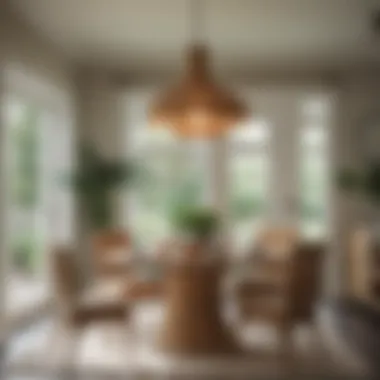

Considering the role that seagrass pendant shades play in adding character and warmth to any space, it's only natural to delve into how to maintain and care for these decorative elements. Proper upkeep not only preserves their aesthetic charm but also prolongs their functionality. Ignoring maintenance can lead to a deterioration in overall quality, reducing their visual appeal and usability. As such, knowing the right cleaning and preservation methods can keep these shades looking fresh and vibrant.
Cleaning Techniques for Seagrass
Cleaning seagrass pendant shades requires a delicate balance; you want to ensure they shine without damaging their natural fibers. Here’s a quick guide to effectively cleaning them:
- Dusting: Start with a soft microfiber cloth or a feather duster to whisk away dust. Doing this regularly can prevent buildup and discoloration, making your shades look like new.
- Spot Cleaning: For those inevitable stains, take a damp cloth and gently blot the affected area. It’s best to test in a small section first to ensure there’s no adverse reaction. If needed, mild soap can be used, but avoid any harsh chemicals.
- Avoid Submersion: Seagrass is a natural material and doesn’t like excess water, which can cause it to warp or lose its shape. Always keep your cleaning methods on the drier side.
Maintaining cleanliness in your seagrass pendant shades not only enhances their beauty but also contributes to a healthier living environment.
Longevity and Preservation Tips
To truly appreciate your seagrass pendant shades, focus on longevity and preservation methods. Here’s how you can ensure these light fixtures stand the test of time:
- Proper Hanging: Ensure that your shades are hung securely; loose fittings can lead to unnecessary wear and tear. Make sure to check them periodically, especially if they wobble.
- Avoid Direct Sunlight: Position your pendant away from direct sunlight to prevent fading. Over time, the sun's rays can take the color from vibrant to muted, dramatically changing their original look.
- Use Gentle Heating: When applicable, use low wattage or LED bulbs. High-heat sources can negatively impact the seagrass, potentially causing it to dry out or become brittle.
- Rotate Placement: If your design allows, occasionally rotate or move your seagrass lighting. This lessens the risk of uneven fading and gives a fresh, new perspective to your space.
Keeping seagrass pendant shades in optimal condition is not merely a chore, but an investment in creating a beautiful and inviting atmosphere within the home. By implementing these options, homeowners and designers alike can ensure that these unique light fixtures remain stunning for years to come.
Styling Tips with Seagrass Pendant Shades
When it comes to styling with seagrass pendant shades, understanding their potential goes beyond just placing them in a room. These shades bring a unique texture and natural charm that can either enhance the existing decor or serve as a standout feature. By considering how to layer and position lighting thoughtfully, one can create an inviting and visually stimulating environment.
Layering Lighting for Depth
Layering lighting is one of the most crucial techniques in interior design, and when it comes to using seagrass pendant shades, it plays a pivotal role. Pendant lights are often a focal point, yet they must coexist harmoniously with other light sources. Combining ambient, task, and accent lighting is key. Here’s how to achieve it:
- Use Multiple Light Sources: Rather than relying solely on one pendant, complement it with floor lamps, table lamps, or wall sconces. This helps distribute light evenly across the space, avoiding stark shadows.
- Different Bulb Types: Experimenting with various bulb types can change the atmosphere. Warm light bulbs may enhance the cozy vibe associated with seagrass, while cooler bulbs could provide a more modern feel.
- Positioning Matters: The height and placement of your pendant shades can dramatically alter the ambiance. A higher pendant can create an open feel, while a lower placement fosters intimacy.
By layering different lighting sources, you enrich the design while enhancing the aesthetic appeal of seagrass pendant shades. Users will feel the depth in the room, creating a multi-dimensional experience that’s pleasing to the eye.
Creating Focal Points in a Room
Creating a focal point is essential in any design narrative, and seagrass pendant shades lend themselves beautifully to this task. A well-placed pendant can anchor a space, guiding the eye and adding character. Consider these strategies:
- Strategic Placement: Hang a striking seagrass pendant shade above dining tables or living room furniture. This draws attention and sets the tone for gatherings or everyday relaxation.
- Contrast with Other Elements: When juxtaposed with different textures or colors, seagrass lighting can shine even brighter. If your room features smooth or shiny surfaces, the woven texture of seagrass creates a delightful contrast.
- Color Coordination: Choose shades that complement your room's color palette. For instance, if your room boasts earthy tones, a natural seagrass pendant will enhance this while subtly standing out.
- Accessorize Thoughtfully: Surround the pendant with decorative elements—think art pieces, plants, or mirrors—to create a cohesive look that draws attention without overwhelming.
By applying these styling techniques, homeowners and designers can effectively use seagrass pendant shades to craft spaces that are both functional and visually impressive. The right balance of lighting, focal points, and textures yields a space that resonates warmth and character.
Exploring Color Schemes
Color schemes are the brushstrokes that can either bring a room to life or allow it to fade into the background. When it concerns seagrass pendant shades, the way colors interplay plays a crucial role in highlighting their aesthetic beauty. The right color palette can enhance the natural quality of seagrass, making it not just a lighting solution, but a statement piece within any interior space. Homeowners and designers alike will benefit from understanding how various shades affect the ambiance of a room and influence emotional responses.
In the context of seagrass pendant lighting, selecting colors that harmonize with this natural material can elevate the overall design of a space. It's all about creating balance – a well-thought-out color scheme supports the organic tones of the seagrass, grounding a room while making it inviting.
Complementary Color Palettes
Complementary color palettes consist of colors that sit opposite each other on the color wheel. This balance promotes visual interest and energy. For instance, pairing the earthy browns and greens of seagrass with deeper blues can reflect the hues of the natural marine environment. Think about a coastal vibe: a navy blue sofa juxtaposed with a seagrass shade brings a refreshing marine feel, evoking the tranquility of the sea.
When picking complementary colors, consider the overall theme of the space. Adding coral or other bold colors can create a lively atmosphere, while soft complementary colors, like sandy beige, can promote warmth and relaxation. In any case, grabbing a single bold hue in small accessories can keep the beauty of the seagrass at the forefront, while still adding pops of personality.
Bold vs. Neutral Pairings
In the world of interior design, deciding whether to go bold or stick to neutral colors often presents a conundrum. How do you want your space to feel? Bold colors can provide contrast and excitement, setting a lively tone, while neutrals offer peace and versatility.
When incorporating seagrass pendant shades, bold colors can become a striking accent. A striking, rich jewel tone like emerald green can highlight the textures in the seagrass, while making it stand out bluntly against muted whites and creams. This not only gives a fresh look but adds character and can serve as a conversation starter.
On the flip side, if a serene haven is what you’re aiming for, neutral color pairings with soft pastels can complement the light, airy feel of seagrass. Pale greys, soft whites, or gentle taupe create a calming backdrop, allowing light to reflect softly off of the woven texture.
"Color is the keyboard, the eyes are the harmonies, the soul is the piano with many strings." - Wassily Kandinsky
Combining bold and neutral palettes can lead to remarkable results too. Use neutral walls and larger pieces of furniture, and then let the seagrass pendant shades – perhaps in a more unique shape or size – sit as a bold centerpiece. In the end, whether leaning towards boldness or neutrality, the ability to harmonize these choices with seagrass brings a sense of coherence to any design.
Understanding color schemes, from complementary palettes to bold versus neutral pairings, not only enriches the aesthetic appeal of seagrass pendant shades but also enhances their functional role in creating atmosphere. It’s a fine art that every homeowner and designer can master with a little thought and exploration.
Cultural Significance of Seagrass
The discussion around seagrass pendant shades cannot be complete without considering their cultural significance. They serve as a bridge between tradition and modernity, linking contemporary design to historical practices. As more people look for designs that resonate with their heritage, these shades become not only functional items but also symbols of cultural identity and appreciation.
Historical Context of Seagrass Usage
Seagrass has been utilized by various cultures for centuries, often stemming from its abundant presence in coastal regions. In many coastal communities, it was woven into mats, baskets, and even fishing nets. The materials, being both sturdy and flexible, found their way into the homes of those who lived by the sea. One might think of the way Pacific Islanders used pandanus leaves for their weaving. These practices, while distinct, echo the universal human inclination to use what is available in one’s environment creatively.
Traditionally, seagrass was often seen as an embodiment of local craftsmanship. Artisans took pride in their ability to transform natural materials into functional art, a practice that is slowly being reclaimed today. The modern iteration of seagrass pendant shades pays homage to this legacy, merging artisan techniques with contemporary aesthetics. In places like Indonesia and the Philippines, artisans continue to craft beautiful pieces that tell stories of their ancestry. The term "handmade" is not merely a selling point; it signifies a connection to cultural roots and community values.
Contemporary Interpretations
In recent years, the aesthetic of seagrass has undergone a revival, aligning itself with modern sensibilities while retaining its historical roots. Designers are not just aiming for beauty but integrating eco-conscious principles into their work. The result is a growing market that favors sustainably sourced materials over mass-produced alternatives.
Today, one can find seagrass pendant shades gracing homes worldwide, transcending geographic boundaries. The versatility of these shades kicks in, making them a fitting choice for various interior styles, from bohemian decor to minimalist designs. The integration of seagrass into mainstream design signals a broader cultural appreciation for artisanal craftsmanship.
"Seagrass pendant shades are not just about light; they are an experience steeped in history, culture, and a commitment to sustainability."
Furthermore, it’s worth noting the role of social media in amplifying the visibility of cultural practices related to seagrass. Platforms like Instagram and Pinterest showcase beautiful interiors adorned with these shades, encouraging others to explore their own cultural heritage through design. It creates a ripple effect, inspiring individuals to seek out local artisans and support ethical practices.
In summary, the cultural significance of seagrass pendant shades goes beyond mere function. They reflect a merging of the past with the present, celebrating craftsmanship, sustainability, and identity. As we adorn our spaces with these natural elements, we not only contribute to the aesthetic appeal of our interiors but also honor a rich history of craftsmanship intertwined with environmental consciousness.
Market Trends
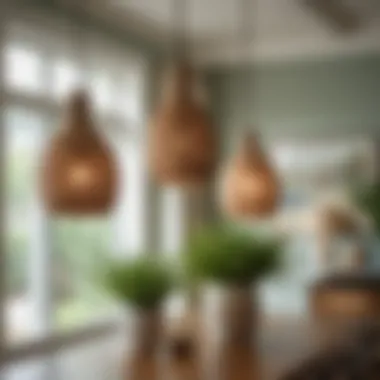

In recent years, the landscape of lighting design has undergone some significant shifts. The importance of keeping an eye on these market trends is paramount, especially when it comes to items like seagrass pendant shades. These trends not only reflect current consumer preferences but also impact how designers approach new projects.
Understanding market trends helps in identifying the characteristics that consumers are yearning for in their living spaces. This can include aspects like sustainability, aesthetic appeal, and versatility. Homeowners and designers alike seek solutions that enhance the atmosphere of a room while also being environmentally conscious. Seagrass pendant shades fit well into this narrative, marrying natural materials with stylish design.
Furthermore, these trends highlight the increasing desire among consumers for personalization and individuality in home accessories. As seagrass shades can be seamlessly integrated into varied interior styles—from the laid-back coastal vibes to more modern and minimalistic spaces—their adaptability plays a crucial role in their growing popularity.
Current Trends in Lighting Design
The current trends reveal a marked shift towards a more holistic approach in lighting design. People are no longer just looking for function; they want lighting that complements their lifestyle and values. Innovations in technology, such as smart home integration, have also made their way into pendant design, offering features like dimming and color temperature adjustments, enhancing the utility of seagrass shades further than their initial aesthetic appeal.
Key considerations in today’s lighting design trends include:
- Sustainability: The focus is on materials that are renewable and environmentally friendly.
- Natural Elements: There’s a strong movement towards incorporating natural fibers and textures.
- Smart Capabilities: Integration with smart home systems provides added functionality.
These factors contribute to making seagrass pendant shades a favored choice for many consumers focused on a well-rounded lighting experience.
Consumer Preferences and Seagrass
It’s fascinating to note how consumer preferences have evolved. The modern buyer is discerning and well-informed, often prioritizing not just style but also the story behind a product. Seagrass pendant shades are captivating because they embody values such as sustainability and artisanal craftsmanship.
People are drawn to products that resonate with their lifestyle and reflect their identity; seagrass shades present an attractive option due to their environmental benefits. Having a product that comes from a renewable resource often serves as a badge of honor among eco-conscious consumers.
Aspects that influence consumer preferences for seagrass pendant shades include:
- Aesthetic Flexibility: The shades can complement various styles, allowing for personal expression.
- Durability: Seagrass can withstand the test of time, appealing to long-term planners.
- Affordable Luxury: They embody an elegant look without breaking the bank, making them an ideal choice for many.
In a nutshell, staying attuned to market trends reveals deeper insights into the buzz surrounding seagrass pendant shades, highlighting the blend of style, functionality, and sustainability—a trifecta that today's consumers find hard to resist.
Integrating Technology with Design
As we dive into the modern landscape of home design, it's clear that the intersection of technology and aesthetics is not just a whim but a necessity. Integrating technology with design, specifically in seagrass pendant shades, allows homeowners and designers to blend beauty with functionality. This integration enhances the living experience, making spaces not only visually appealing but also adaptable to evolving lifestyle needs.
Smart Lighting Solutions
With the advent of smart home technology, lighting has undergone a transformation that goes beyond merely illuminating a space. Smart lighting solutions now enable individuals to manage their environments with unprecedented ease. Imagine adjusting the brightness, color temperature, or even programming the shades to respond to your daily routine—all from your smartphone or voice-activated assistant.
This level of control means homeowners can tailor the mood of a room based on the time of day, occasion, or personal preference. For seagrass pendant shades, this can mean highlighting their natural textures in warm light during cozy evenings or shifting to cooler tones for productivity during the day.
"Smart lighting not only emphasizes the aesthetics of seagrass pendant shades but also offers a functional approach to energy efficiency and convenience."
The adaptability of these shades makes them essential in settings ranging from intimate dining areas to vibrant living rooms. For example, in a dining room, you could create a warm, inviting atmosphere with just a few taps on your phone, complementing the earthy charm of seagrass with soft, ambient light that sets the table for conversation.
Innovations in Pendant Shade Functionality
In addition to smart controls, recent innovations have introduced features such as built-in speakers, adjustable lengths, and even mood-shifting technology embedded within the shades themselves. These innovations make seagrass pendant shades not just a visual element in a room, but a multifunctional component that enhances the overall interior experience.
Adjustable pendant shades, for instance, allow for bespoke lighting according to individual preferences and spatial dynamics. In low-ceiling rooms, a shorter pendant can maintain intimacy, whereas a longer drop can create drama and reach light into high-ceiling spaces.
Another notable trend is the incorporation of energy-efficient LEDs. These lighting solutions lend themselves well to seagrass shades, enhancing their organic look while reducing energy costs and consumption. When homeowners prioritize eco-friendliness alongside style, seagrass pendants emerge as the perfect candidate to combine traditional design with forward-thinking technology.
In summary, integrating technology with design not only elevates the aesthetic value of seagrass pendant shades but also underscores their functional appeal. With smart solutions and innovative designs, these shades become essential elements in modern homes, catering to a lifestyle that values flexibility, sustainability, and style.
Ethical Sourcing of Seagrass
When we talk about seagrass pendant shades, one element that simply cannot be overlooked is the ethical sourcing of the material. As modern consumers become more aware of the environmental impact of their choices, ensuring that the seagrass used in pendant lighting is harvested responsibly becomes paramount. This concern not only affects the ecological balance of marine ecosystems but also the sustainability of seagrass as a material in the long run.
Ensuring Responsible Harvesting Practices
Responsible harvesting practices are fundamental to the ethical sourcing of seagrass. This means doing it in a way that maintains the health of seagrass beds, which are essential for carbon sequestration and serve as habitat for various marine species. Practitioners involved in the harvesting must avoid damaging these underwater meadows, which can take years to recover if disturbed. When suppliers follow ecologically sound quotas and techniques, they not only protect marine biodiversity but also ensure the seagrass remains a viable resource for the future.
- Sustainable Harvesting Techniques: This can include selective cutting methods rather than uprooting entire plants.
- Monitoring Population Health: Regular assessments can identify if a particular area is being over-harvested or if the seagrass needs time to regenerate.
- Community Engagement: Involving local communities in these practices can lead to shared responsibilities and more respect for the ecosystem.
If these practices are adhered to, seagrass can be harvested without compromising the delicate balance of marine ecosystems. Consumers increasingly prefer products that reflect their values, and ethically sourced seagrass is no exception.
Certifications and Standards
To add another layer of assurance for consumers, certifications and standards regarding the sourcing of seagrass are essential. These certifications serve as a kind of seal of approval, offering reassurance that products come from responsible and sustainable sources. Several organizations oversee these certifications, ensuring that practices meet agreed-upon criteria. Some crucial certifications include:
- Marine Stewardship Council (MSC): This certification focuses on sustainable fisheries but often encourages broader considerations that include seagrass habitats as primary ecosystems in need of protection.
- Global Organic Textile Standard (GOTS): While typically applied to textiles, the principles of organic cultivation often extend to associated materials, including seagrass. It ensures minimal environmental impact during both harvesting and production.
The presence of recognized certifications empowers consumers, helping them make informed decisions while promoting ethical practices in the marketplace.
"Purchasing ethically sourced products not only supports the environment but also encourages fair labor practices among suppliers."
Concluding Thoughts
The exploration of seagrass pendant shades reveals important elements that elevate both aesthetic and functional aspects of interior design. In a world where sustainability and style often find themselves at odds, seagrass shines as a material that harmonizes these qualities beautifully. Not only does it embody a natural charm, but it also provides versatility that appeals to various design sensibilities. For homeowners and designers alike, the integration of seagrass pendant shades can enhance the ambiance of any space while maintaining a commitment to environmental responsibility.
The Future of Seagrass Pendant Shades
As environmental consciousness continues to grow, the future of seagrass pendant shades looks promising. The demand for eco-friendly materials is on the rise, and seagrass—being a renewable resource—fits right into this trend. Manufacturers are likely to innovate with these shades, introducing new designs that capitalize on their texture and warmth. Furthermore, the shift towards more responsible sourcing methods will likely propel seagrass into the spotlight as a staple for conscious consumers who want beauty in their homes without compromising the health of our planet.
Consider the possibilities:
- Customization: Expect to see more brands offering customization options, allowing consumers to choose colors and styles tailored to their personal aesthetics.
- Collaboration: Partnerships between artists and designers could lead to unique creations, blending seagrass with other materials for striking contrasts.
- Education: As sustainability becomes a larger focus in design, manufacturers and retailers may take the initiative to educate customers about the benefits of choosing seagrass, further solidifying its position in the market.
Encouraging Eco-Friendly Choices in Home Design
Encouraging eco-friendly choices in home design is not just a trend; it’s becoming a necessity. As shoppers become increasingly aware of their environmental impact, opting for sustainable materials like seagrass is a practical way to make a difference. This shift goes beyond personal preference; it reflects a broader movement towards conscientious living. Seagrass habitats act as natural carbon sinks, and its utilization in home decor reduces reliance on less sustainable materials. Here are some beneficial considerations:
- Durability: Seagrass products are resistant to moisture and wear, offering longevity that aligns with the principles of sustainable design.
- Biodegradability: At the end of their life cycle, seagrass shades won't contribute to landfill overflow, making them an environmentally friendly option.
- Support for Local Artisans: By choosing seagrass pendant shades, consumers often support local craftsmanship that prides itself on tradition and sustainable practices.
In community discussions, as seen on platforms like reddit.com and articles from britannica.com, the emphasis on eco-friendly choices in home decor grows louder. Consumers want to create spaces that not only look good but feel good as well, knowing that they’ve made choices that contribute to the well-being of the planet. There’s a certain peace of mind in investing in pieces that carry a story; seagrass pendant shades certainly have one to tell.
Ultimately, the direction in which seagrass pendant shades evolve will depend not only on consumer choices but also on a collective commitment towards a sustainable future.







